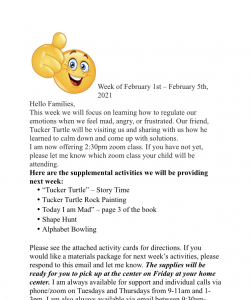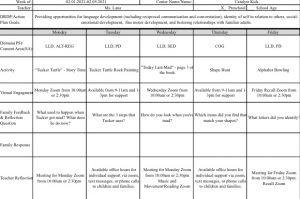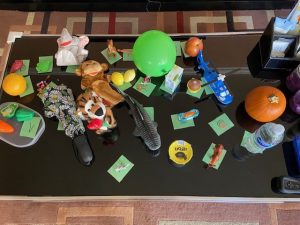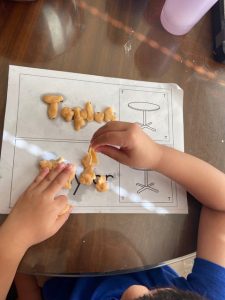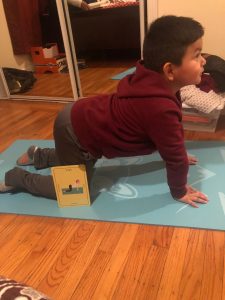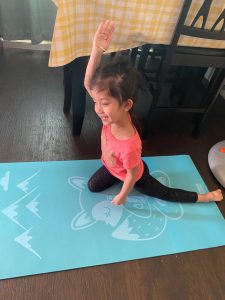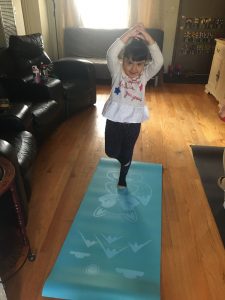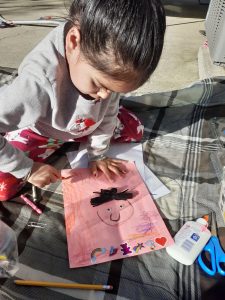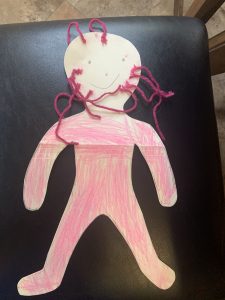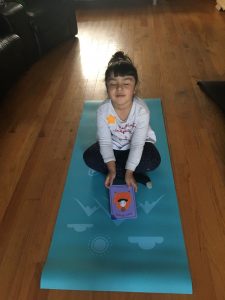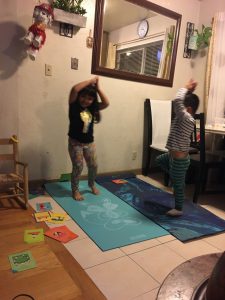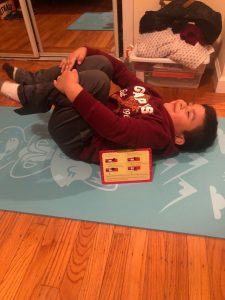March 15, 2021
Staying connected while distanced in a COVID world
Throughout the past several months, Catalyst Kids had become acclimated to our new normal. As an essential business, we have been open and operating throughout the pandemic, but recognized the restrictions in place and the limitations placed on families. Our Distance Connections program was founded and created for our families who were not attending Catalyst for in-person services. It was a great solution for our families wanting to continue feeling connected from a distance. Svetlana (Ms. Lana) Gomenyuk at our North Country location in the Sacramento area and Denise Reyes at Faria in the Bay Area, both played a key role in executing the program.
Svetlana is a Master Teacher over at North Country and mentioned to us that discussions for the program started in August before it officially launched In September. The Program Directors had reached out to Site Supervisors to see which children were enrolled at the centers but were not attending.
“We’d reach out to each family and provide them with a list of activities.”
She started the process by reaching out to families and soon enough, 37 students were enrolled and eventually that number rose to 45. As more students are returning to in-person learning, that number recently dropped down to 37. There are two different zoom sessions on Mondays, Wednesdays, and Fridays. One at 10am and one at 2:30pm for a half an hour during each time slot. These schedules were designed to meet the needs of family schedules. Every few months, Svetlana works with the purchasing team to get the materials needed for all students. “We’d send out a letter with lesson plans and activity cards.”
Denise, Teacher at Faria, tells us that the center began supporting the subsidized preschool curriculum in September as they usually do school age. She has worked at both Faria and Sedgwick and is currently in her 34th year. Since they were not currently providing school-aged care, the opportunity came about for the new subsidized program.
“I work with 22 children and each week; we have meetings with them. This would include a group zoom meeting, storytime, and 1×1 time individually each week. Since we have students attending from different centers, we deliver a weekly packet to each home center every other week that includes a 2-week packet. Right now, we have 3 from Morgan Hill, 2 in Sunnyvale, and 2 in San Jose. We even had a yoga class that incorporated yoga prep cards. We had 4-5 children doing yoga.”
We asked Svetlana what a typical day looked like in the distance connection program. At 10 am, Monday, Wednesday, and Friday the zoom runs for about thirty minutes. The curriculum includes pyramid training. We use Tucker Turtle (a turtle puppet) to demonstrate our feelings, especially with everything that is currently going on. We’ll use solutions cards to help discover the appropriate actions for our feelings. Sometimes we’ll do dice math. The kids each get their own dice to use. We document everything when it comes to connecting with students and we later prepare for the afternoon zoom session. We offer a Tuesday and Thursday office one-on-one zoom with parents or with a child if they need it. On Tuesdays and Thursdays, we work on portfolios.
For Denise, Mondays are days where curriculum packets are the primary focus while Tuesdays and Wednesdays are reserved for one-on-one days. They meet with families on Thursdays and Fridays to deliver packets and Friday zoom meetings are reserved for storytime.
When asked about the most rewarding and enjoyable part of the program, Svetlana mentions that being able to offer something to children who cannot be present in the program due to the pandemic has just been amazing. “Being able to grow and evolve while still providing a quality program and teaching skills to these children through zoom has been so rewarding.” Parents have sent us pictures from the social-emotional workbook. Each page had a different emotion the children are working on. We use Tucker Turtle to help teach children how to calm themselves down. “We don’t have a shell, so how do we calm down? By taking deep breaths. Social-emotional development is my passion and I’m very excited about it. The biggest challenge is not seeing the children learn these things in-person. We do not know if they are practicing it at home. We want to be sure they understood it. When we work on lesson plans, we want to make sure we’re being as inclusive as possible.
“We want to continue to have interactions with families and children that are rewarding and support families who can’t have onsite care at this time. Especially with our preschoolers, it’s so important for them to continue to have that social interaction, even if it is virtual,” Reyes says.
We spent some time asking how we can expect the Distance Learning program to change and evolve.
“Covid has really changed everything,” says Gomenyuk. “We’re currently working on keeping the program open even for sick children who may not be able to attend in person. It would allow us to serve more families, especially part-day children. Having this service and going statewide to enroll private families who may not be a part of our program already, we want them to know about this program.”
Denise says that while she is new to the program, it has been so amazing to have the additional support with a new distance connection group. It helps us keep ideas fresh.
We asked both Denise and Svetlana to tell us what the organization has meant to them and what helps set us apart from others in the industry.
“We’re really about program quality and in every center you work in, you see that quality come to life. Being able to document everything and just making sure children are safe, loved, and healthy…. other companies might be doing similar things, but not to our same extent of quality. It could be raining, and the kids still go run outside to play. It is so important to their sensory development. They adapt so easily. We also use a HighScope approach, and the combination is what makes our curriculum so unique. Our parents have really encouraged me, it is such a great support for the kids, and it is amazing to have the knowledge that we could be building up future presidents,” Gomenyuk says.
“We have the best practices around a child’s development and focusing on what is best for the child is our philosophy and main approach. We are putting children and families first. We even had yoga mats brought in after conversations around staying healthy, especially at home. The children were so excited about it and immediately started doing yoga at home,” says Reyes.
